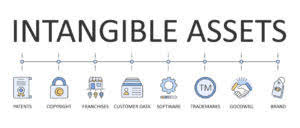Your cart is currently empty!
Stockholders’ Equity: What It Is, How to Calculate It, Examples

If this figure is negative, it may indicate an oncoming bankruptcy for that business, particularly if there exists a large debt liability as well. The house has a current market value of $175,000, and the mortgage owed totals $100,000. Sam has $75,000 worth of equity in the home or $175,000 (asset total) – $100,000 (liability total). The amount of equity one has in their residence represents how much of the home they own outright by subtracting from the mortgage debt owed. Equity on a property or home stems from payments made against a mortgage, including a down payment and increases in property value.
What Are the 3 Elements of the Accounting Equation?

Lawmakers and scientists issued calls to eliminate clinical tools that perpetuate bias and may harm patients of color. A kidney health calculator kept Black patients from receiving needed transplants. Lung function testing with race corrections led to missed diagnoses of severe pulmonary disease. And in all likelihood, UTI guidelines for little kids — created to avoid subjecting them to needless catheterizations — left Black girls with undiagnosed infections, and in some cases, long-term kidney damage.
- Home equity is often an individual’s greatest source of collateral, and the owner can use it to get a home equity loan, which some call a second mortgage or a home equity line of credit (HELOC).
- Both liabilities and shareholders’ equity represent how the assets of a company are financed.
- Shareholder equity alone is not a definitive indicator of a company’s financial health.
- The research framework provides reliable grounds for examining the impact of scalability, affordability, and replicability on immunization coverage as the primary public healthcare outcome.
- The equity capital/stockholders’ equity can also be viewed as a company’s net assets.
- Becoming profitable or establishing a positive net income should be the goal of every small business.
How to calculate the debt-to-equity ratio?
The healthcare challenges addressed in this study, such as equitable access to healthcare for rural, tribal, and underprivileged populations, are not unique to India. Many developing countries face similar issues, making the findings of this study potentially applicable to other contexts. The operational model of MMUs evaluated in this study can serve as a reference for other developing countries looking to implement or enhance similar healthcare interventions.

Fidelity Smart Money℠
The account may also be called shareholders/owners/stockholders equity or net worth. Stockholders’ equity is the remaining assets available to shareholders after all liabilities are paid. It is calculated either as a firm’s total assets less its total liabilities or alternatively as the sum of share capital and retained earnings less treasury shares.
Which of these is most important for your financial advisor to have?
- If the company was liquidated, and its assets turned into $3 million, you would use some of that money to pay off the $1.2 million in liabilities.
- In other words, the total amount of all assets will always equal the sum of liabilities and shareholders’ equity.
- As part of its 2023 annual report, Apple reported $73.812 billion of shareholder equity.
- For example, if the assets are liquidated in a negative shareholder equity situation, all assets will be insufficient to pay all of the debt, and shareholders will walk away with nothing.
- The retained earnings in this formula are the sum of a company’s total or cumulative profits after they pay dividends.
The breakeven point is the point at which the total cost to run your business and the revenue it generates are equal. In other words, there is no loss or gain for your small business because it’s not earning profits, but it’s not losing money either. In the early equity equation stages of business, the net income equation may demonstrate a net loss. Becoming profitable or establishing a positive net income should be the goal of every small business. And equity is the value of the portion of your company that belongs to you, the owner.
- Thus, shareholder equity is equal to a company’s total assets minus its total liabilities.
- Shareholder equity can also be expressed as a company’s share capital and retained earnings less the value of treasury shares.
- They have served the people residing in remote locations of the six states through more than 200 mobile vaccination units.
- Current liabilities are financial obligations your business owes to another party— things like loans, accounts payable, and taxes.
- Initially, the questionnaire was tested in a pilot study with a small group of healthcare stakeholders before it was finalized.
Would you prefer to work with a financial professional remotely or in-person?

To begin, Cronbach’s alpha (α) and composite reliability (CR) were used to evaluate internal consistency reliability. The values of α for all obtained factors were more significant than 0.8, while those linked with CR were greater than 0.8. Both α and CR values indicate commendable fit, which implies that they are more significant than the acceptable threshold of 0.7 for all factors [52], which means that the internal consistency reliability is satisfactory.
- The fundamental accounting equation states that the total assets belonging to a company must always be equal to the sum of its total liabilities and shareholders’ equity.
- The main objective of mobile clinics is to create sustainability for long-term impact.
- Understanding equity and being able to track its growth is crucial to understanding the long-term financial health of a business.
- Bondholders are paid and liquidated before preferred shareholders, born and liquidated before common shareholders.
- The analysis was carried out to evaluate the derived measurement model using IBM SPSS AMOS 26 [53].
It can be found on the balance sheet, one of three essential financial documents for all small businesses. The formula to calculate shareholders equity is equal to the difference between total assets and total liabilities. Equity can be found on a company’s balance sheet and is one of the most common pieces of data employed by analysts to assess a company’s financial health. Assets represent the valuable resources controlled by a company, while liabilities represent its obligations.
Retained Earnings Calculation Example (RE)

And if you keep paying your mortgage and your home rises in value over time, that equity could end up becoming a big part of your net worth. Treasury shares continue to count as issued shares, but they are not considered to be outstanding and are thus not included in dividends https://www.bookstime.com/articles/statement-of-comprehensive-income or the calculation of earnings per share (EPS). Treasury shares can always be reissued back to stockholders for purchase when companies need to raise more capital. If a company doesn’t wish to hang on to the shares for future financing, it can choose to retire the shares.
Leave a Reply